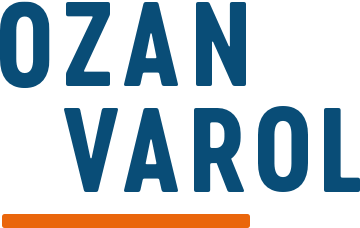In 1637, Pierre de Fermat scribbled a note on a textbook margin that would baffle mathematicians for more than three centuries.
Fermat had a theory. He proposed that there’s no solution to the formula an + bn = cn for any n greater than 2. “I have a truly marvelous demonstration of this proposition,” he wrote, “which this margin is too narrow to contain.”
And that’s all he wrote.
Fermat died before supplying the missing proof for what came to be known as Fermat’s Last Theorem. The teaser he left behind continued to tantalize mathematicians for centuries (and made them wish Fermat had a bigger book to write on). Generations of mathematicians tried—and failed—to prove Fermat’s Last Theorem.
Until Andrew Wiles came along.
For most 10-year-olds, the definition of a good time doesn’t include reading math books for fun. But Wiles was no ordinary 10-year-old. He would hang out at his local library in Cambridge, England, and surf the shelves for math books.
One day, he spotted a book devoted entirely to Fermat’s Last Theorem. He was tantalized by the mystery of a theorem that was so easy to state, yet so difficult to prove. Lacking the mathematical chops to tackle the proof, he set it aside for over two decades.
He returned to the theorem later in life as a math professor and devoted seven years to working on it in almost total secrecy. In an ambiguously-titled 1993 lecture in Cambridge, Wiles publicly revealed that he had solved the centuries-old mystery of Fermat’s Last Theorem. The announcement sent mathematicians in attendance, and around the globe, into a tizzy: “It’s the most exciting thing that’s happened in — geez — maybe ever, in mathematics,” said Dr. Leonard Adelman. Even The New York Times ran a front-page story on the discovery, exclaiming “At Last Shout of ‘Eureka!’ in Age-Old Math Mystery.”
But the celebrations proved premature. Wiles had made a mistake in a critical part of his proof. The mistake emerged during the peer-review process after Wiles submitted his proof for publication.
It would take another year, and collaboration with another mathematician, to repair the proof. Describing the day he found the missing piece, Wiles said, “I walked around the department, and I’d keep coming back to my desk looking to see if it was still there. It was still there. I couldn’t contain myself.” At the end, the proof was 150 pages long—far longer than any book margin would have allowed Fermat to write on.
Reflecting on how he managed to prove the theorem, Wiles compared the process of discovery to navigating a dark mansion. You start in the first room, he said, and spend months groping, poking, and bumping into things in a hit-or-miss process. After tremendous disorientation and confusion, you might eventually find the light switch. You then move on to the next dark room and begin the process all over again.
These breakthroughs, Wiles explains, are “the culmination of—and couldn’t exist without—the many months of stumbling around in the dark that proceed them.”
In school, we’re given the false impression that scientists took a straight path to the light switch. Textbooks with lofty titles—The Principles of Physics—magically reveal “the principles” in three hundred digestible pages. An authority figure then steps up to the lectern to feed us “the truth.” We learn about Newton’s “laws”—as if they arrived by a grand divine visitation or a stroke of genius—but not the years he spent exploring, revising, and tweaking them. The laws that Newton failed to establish—most notably his experiments in alchemy, which attempted, and spectacularly failed, to turn lead into gold—don’t make the cut.
The path to the light switch is not a straight one. There are fits and starts, mistakes and corrections, failures and successes.
Be careful if the paths you’re taking to the light switches in your life are straight. If the drugs you’re developing were certain to work, if your client were certain to be acquitted in court, if your Mars rover were certain to get to its destination, your jobs wouldn’t exist.
It’s the ability to make the most out of uncertainty that creates the most potential value.
Where certainty ends, progress begins.
Sources used:
Stuart Firestein, Ignorance: How It Drives Science, 2012.
Simon Singh, Fermat’s Last Theorem, 1997.
Solving Fermat: Andrew Wiles, https://www.pbs.org/wgbh/nova/proof/wiles.html.
At Last, Shout of ‘Eureka!’ In Age-Old Math Mystery, https://www.nytimes.com/1993/06/24/us/at-last-shout-of-eureka-in-age-old-math-mystery.html;
A Year Later, Snag Persists In Math Proof, https://www.nytimes.com/1994/06/28/science/a-year-later-snag-persists-in-math-proof.html.




